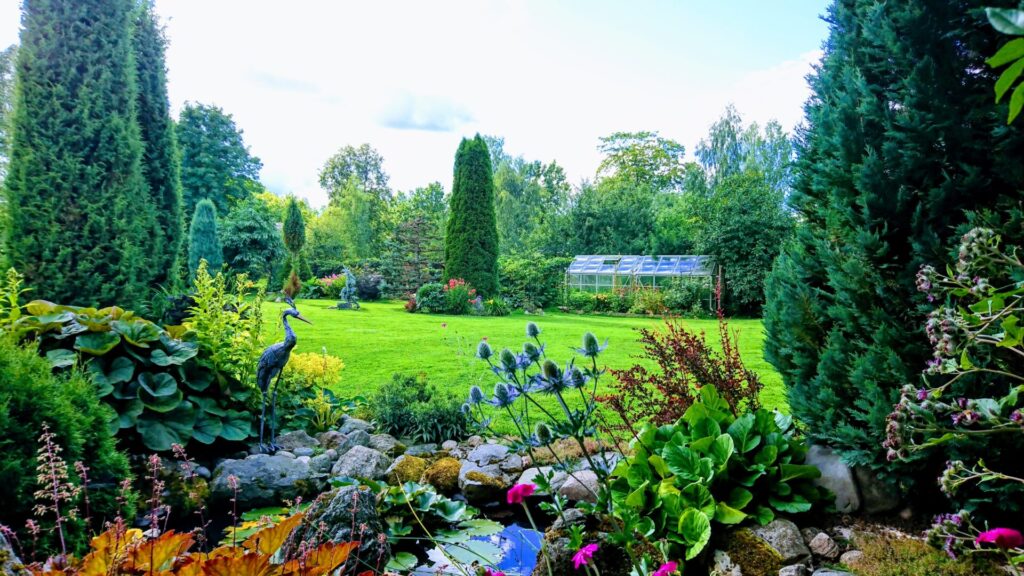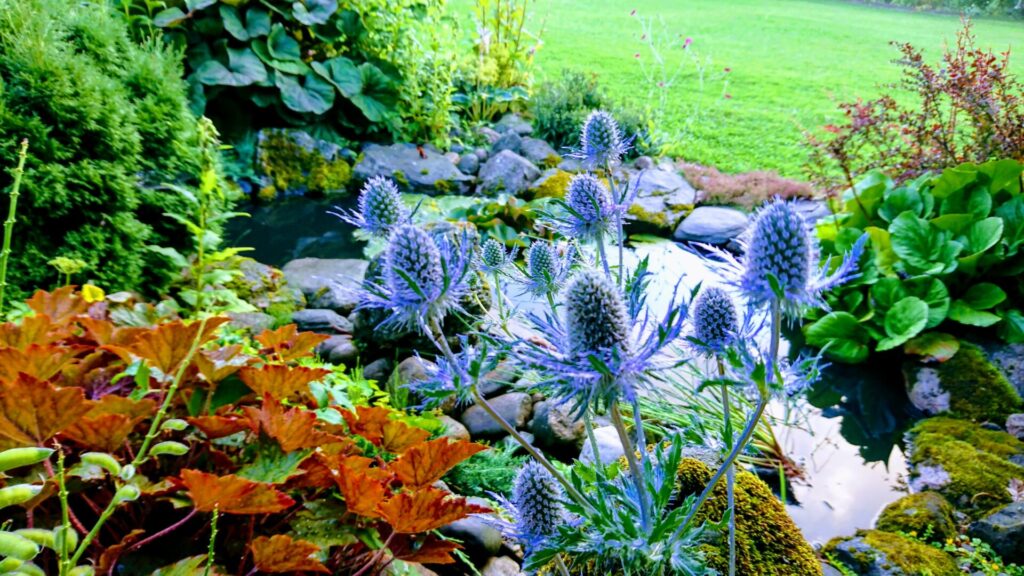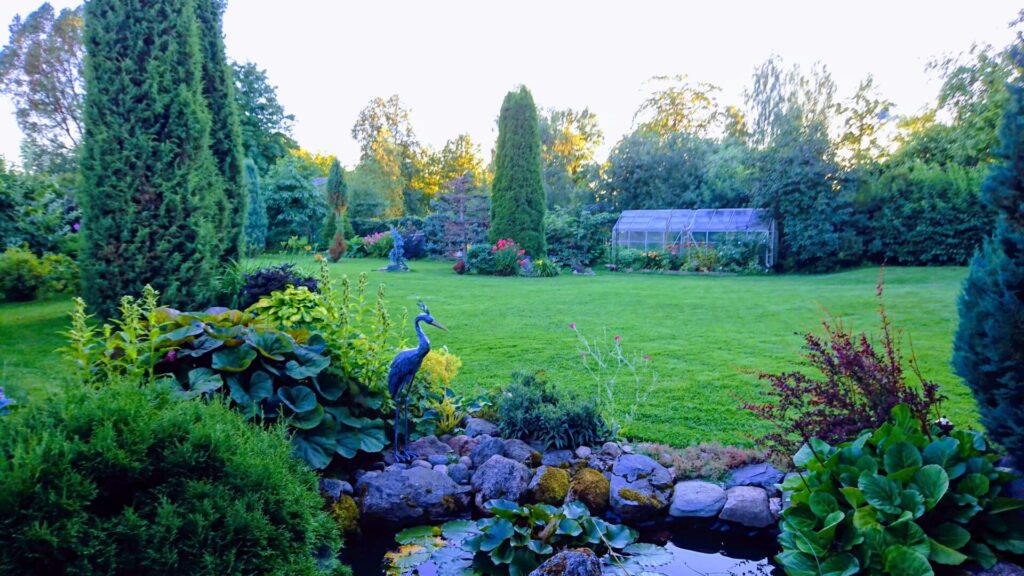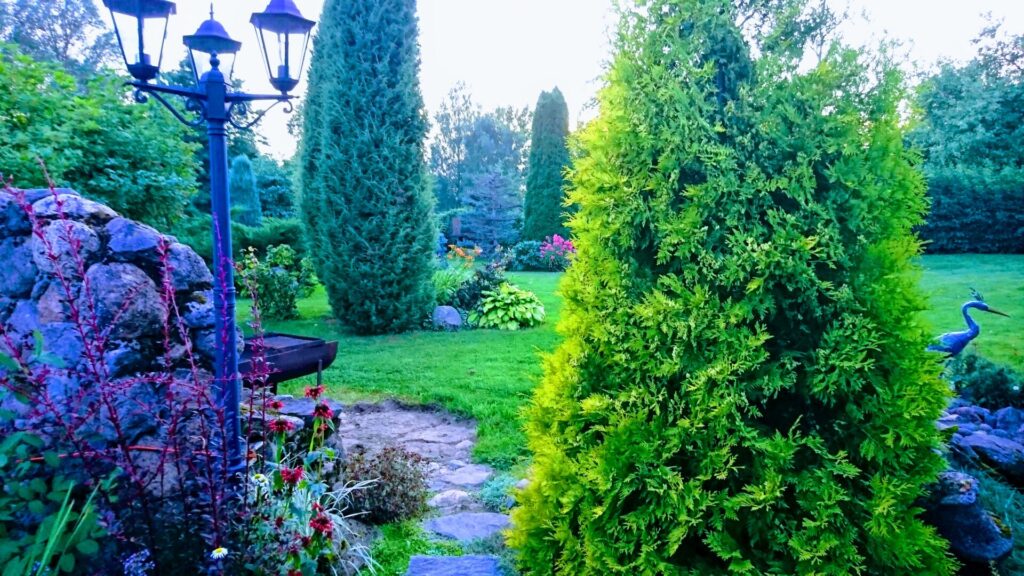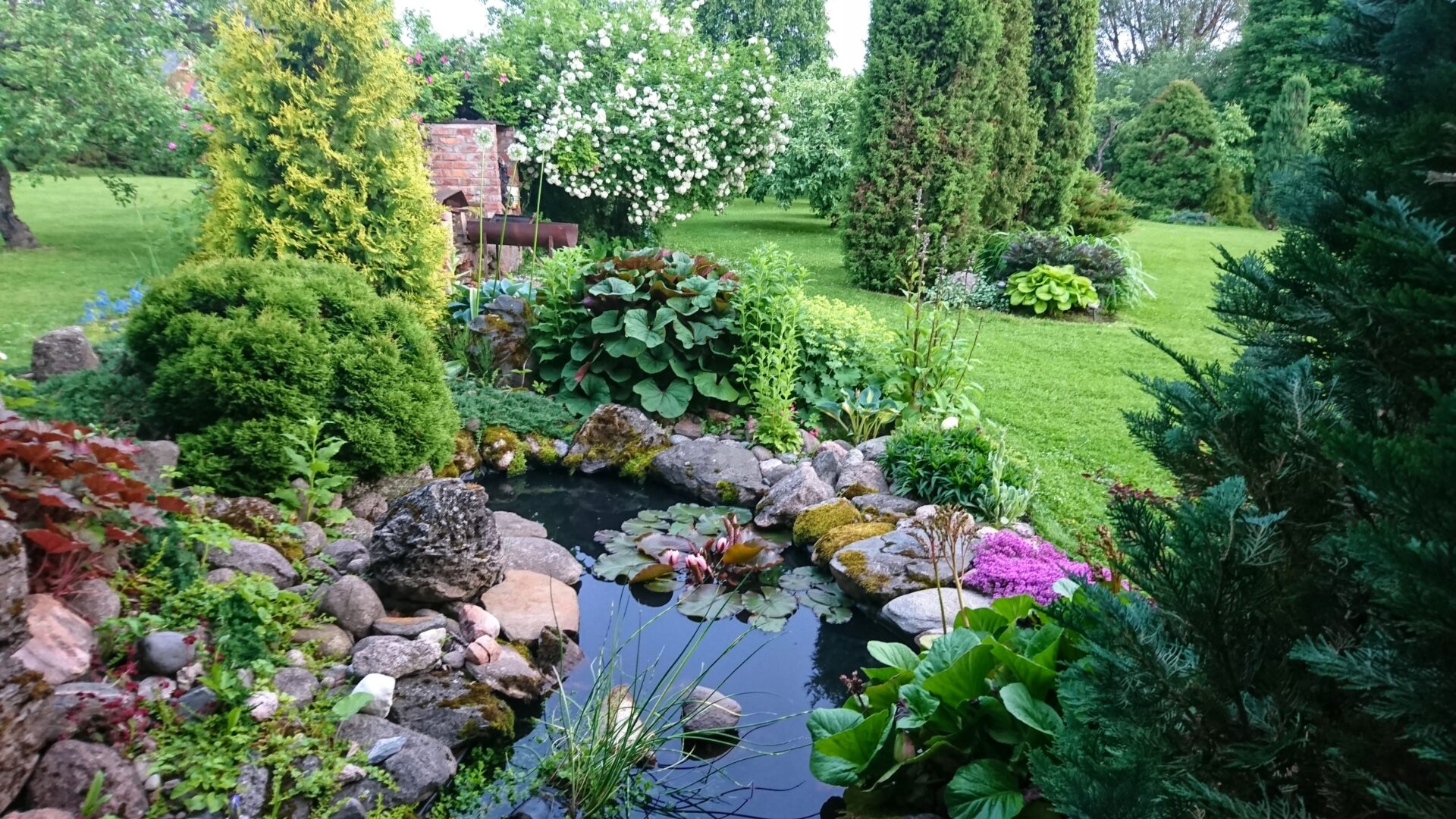Tiik aias oli üks meie esimesi unistusi oma aia loomisel. Tegelikult peaks see pealkiri olema vist meie tiigi- ja grillinurga lugu, kuna need moodustavad aias ühtse nurgakese. Loo täpset algusaastat ei mäleta enam keegi, aga aasta-paar enne millenniumi see igatahes oli. Tiigimõte oli juba jupp aega settinud, koht valmis vaadatud, mõõdud paika pandud. Isegi sobiv paks tiigikile oli valmis ostetud. Mis siis muud, kui sõbrad appi kaevama ja mõne tunniga kaevasid paar tugevat meest augu maasse. Siit edasi tegime aga kõike targematele soovitustele vastupidiselt. Auku kaevates selgus, et selles kohas on tegu puhta punase saviga. Sellest tulenevalt tegime tiigiservi laugjamaks ainult nii palju, et suurematele äärekividele ruumi teha. Samuti jätsime ära “kohustusliku” liivapadja ja pehmendava kanga, mis peaks tiigikile kauem terve hoidma. Ette rutates võin öelda, et suuremat kahju pole neist tegematajätmistest siiani sündinud. Tiigikile on terve siiani, servade vajumist pole praktiliselt olnud. Ainult eesmist äärt tuli paar aastat tagasi valamistööga veidi toetada, sest peale 20 aastat pealkõndimist hakkas esiserv veidi ära vajuma. Esimesed pildid meie tiigi algusaegadest:
Pond in garden was one of our first dreams when creating our own garden.In fact, this title should probably be the story of our pond and barbecue corner, since they form a single corner in the garden. No one remembers the exact beginning year of the story, but it was a year or two before the turn of millennium anyway. The idea of a pond had already settled for a while, the place was ready, the measurements were determined. Even the suitable thick pond film was bought ready-made. What else but to ask friends to help, and in a couple of hours strong men dug a hole in the ground. From here on, however, we did everything against the wiser recommendations. When digging a hole, it turned out that this place is pure red clay. Therefore we flattened the edges of the pond only enough to make room for larger curb stones. We also omitted the “mandatory” sand pad and softening fabric, which should keep the pond film healthy longer. Hurrying up, I can say that no major damage has been caused by these omissions so far. The pond film is still intact, there has been practically no sinking of the edges. Only the front edge had to be slightly supported with casting a few years ago, because after 20 years of walking on it, the front edge started to sag a little. The first pictures from the early days of our pond:
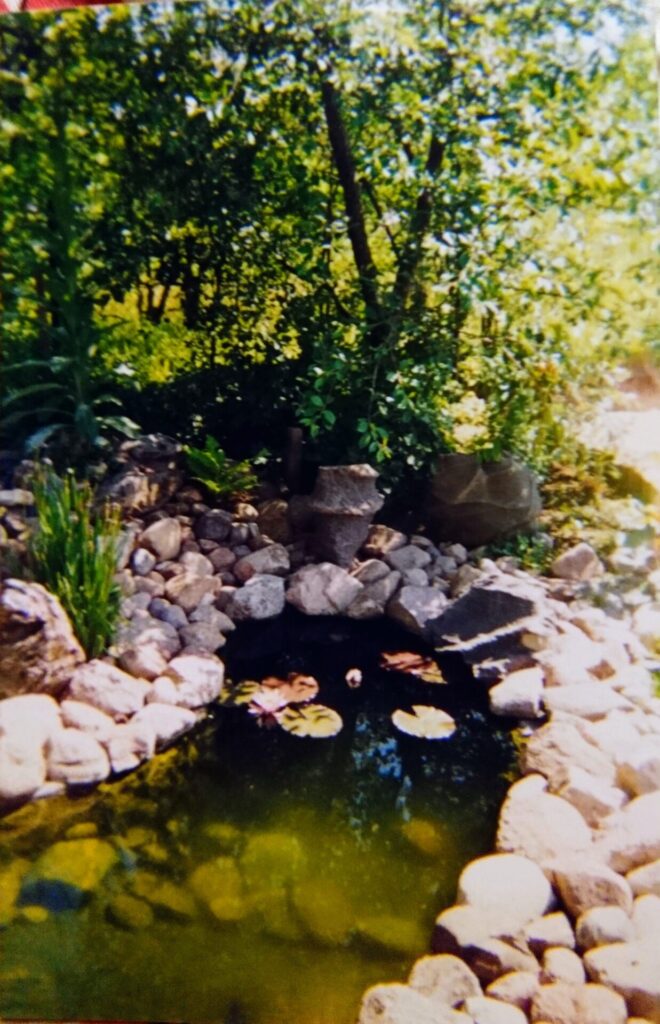
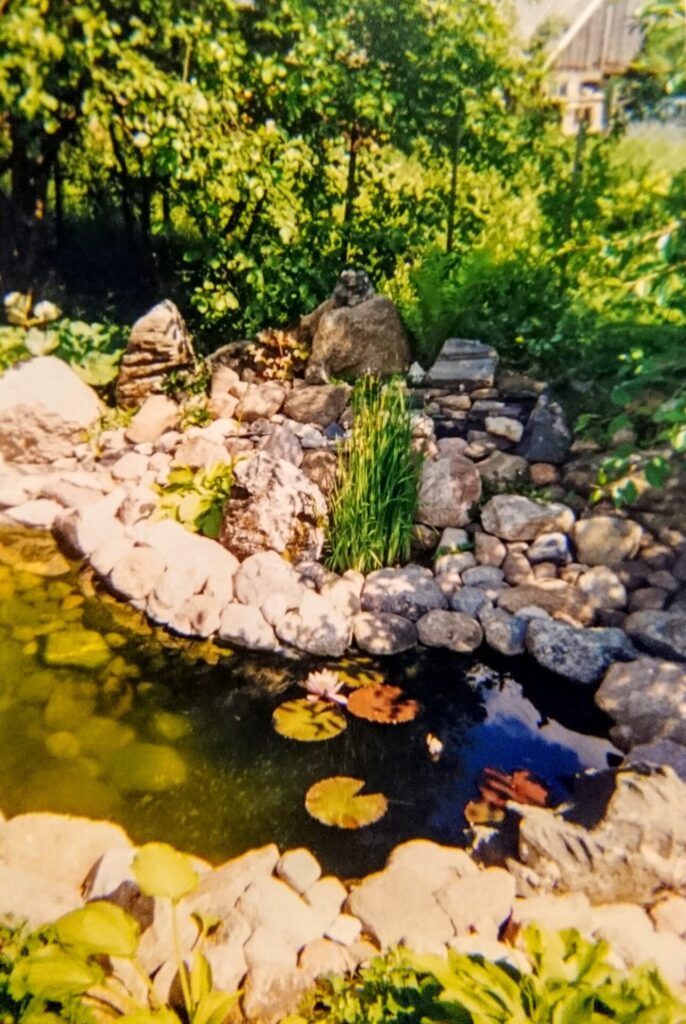
Tiigi madalam osa on umbes 40 cm sügavune, aga sügavam osa 150 cm, et ei peaks sinna paigutatud vesiroosi talveks keldrisse talvituma vedama.
Varsti peale tiigi valmimist ehitas pereisa tiigi kõrvale ka maakividest grillinurga.
The lower part of the pond is about 40 cm deep, but the deeper part is 150 cm, so that the water lily placed there does not have to be transported to the basement for the winter.
Soon after the pond was completed, the father of the family also built a barbecue corner made of ground stones next to the pond.
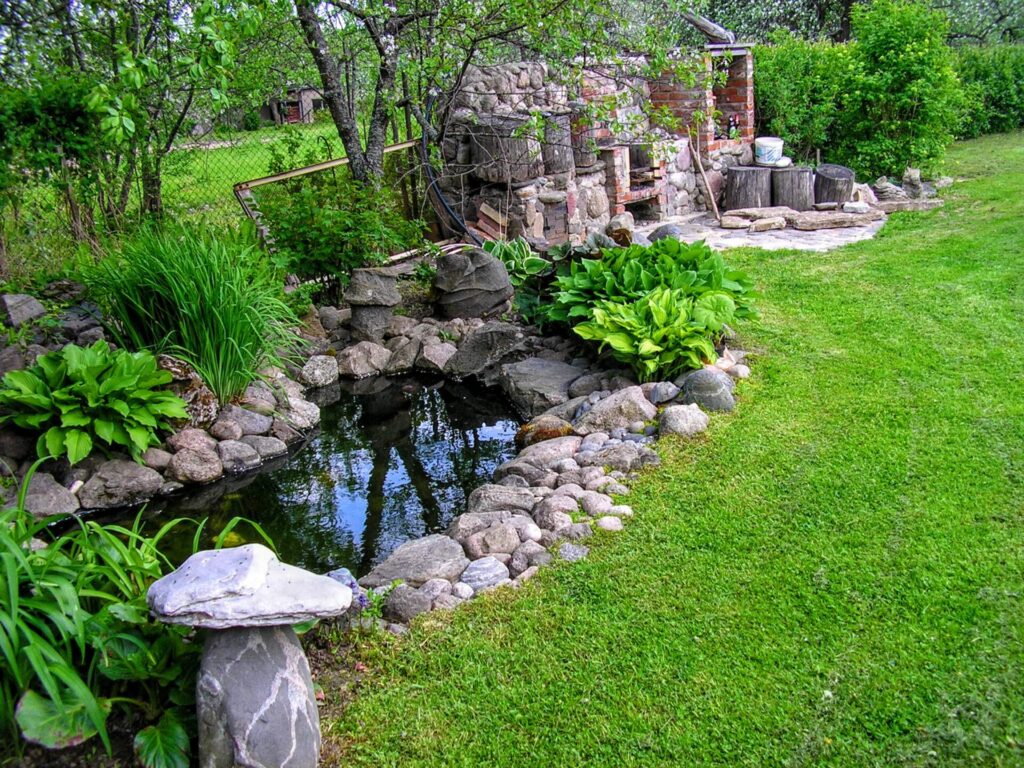
Alguses haljastasime tiigiümbruse enne meid aias olnud bergeeniate, hostade ja päevaliiliate jagamise teel saadud taimedega. Samuti kasutasime lopsakuse saavutamiseks sõnajalgu ja lisaks ka katkujuurt, kelle levimist piirasime metallpiirdega.
In the beginning, we landscaped the pond area with plants obtained by dividing bergenias, hostas and daylilies that were in the garden before us. We also used ferns to achieve lushness, and in addition, we also used butterbur, whose spread we limited with a metal border.

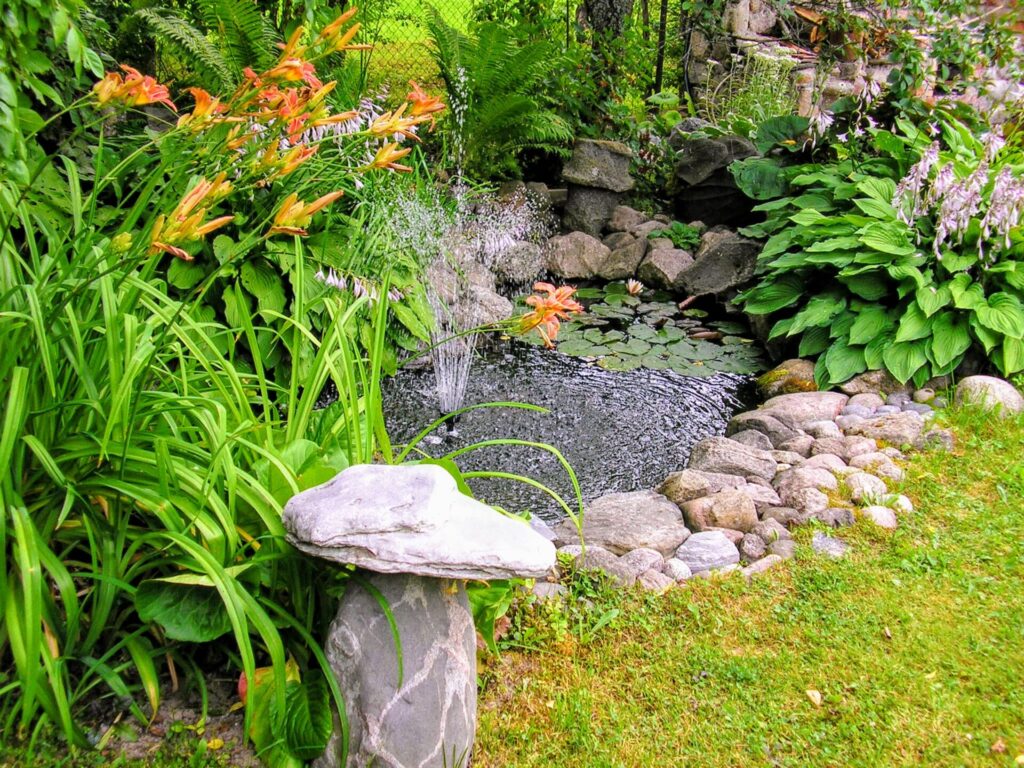
Esimesed viis-kuus aastat oli kõik ilus ja peaaegu hooldusvaba, siis aga hakkas loodus võimust võtma. Esimesena hakkasid igale poole oma risoome laiali ajama sõnajalad. Neile sekundeerisid katkujuured, kelle isekülvioskust me olime alahinnanud. Järgneval pildil on näha kevadine katkujuure õis lausa keset kivikatet, mille all on tiigikile.
For the first five or six years, everything was beautiful and almost maintenance-free, but then nature started to take over. The ferns were the first to spread their rhizomes everywhere. They were seconded by butterbur, whose self-sowing ability we had underestimated. In the following picture, you can see the butterbur flower in the middle of the stone cover, where there is pond film underneath.
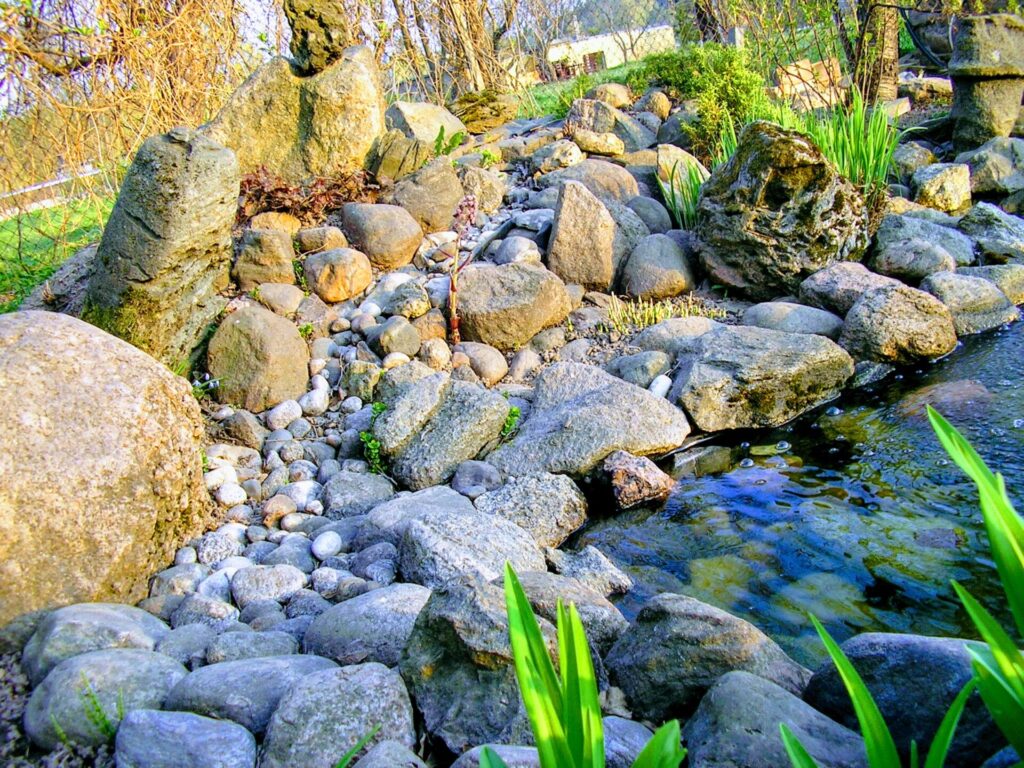
Kuna olime tiigi kaevamisest järele jäänud pinnasest tekitanud tiigi kõrvale väikese künka, siis oli neil tegelastel ruumi, kuhu end laiali ajada. Läks mitu head aastat, enne kui õnnestus nad lõplikult välja kaevata. Katkujuurest lahti saamine on igatahes väga keeruline tegevus, sest juured on väga sügaval.
Since we had created a small hill next to the pond from the soil left over from digging the pond, these characters had room to where to disperse. Several good years passed before they were finally excavated. Getting rid of the butterbur is a very difficult activity anyway, because the roots are very deep.
Nii pisikese tiigi puhul on paratamatu, et aeg-ajalt tuleb seda puhastada. Loodusliku koosluse tekitamiseks asustasime tiiki mõned teod, aga hoolsast paljunemisest hoolimata ei suutnud nad ennast tiiki lennanud puulehtedest ja muust sodist läbi närida. Nii tuligi pidevalt üle paari aasta tiigielanikud kahvaga välja korjata, vana vesi välja pumbata, põhi mudast puhastada ja uus vesi sisse lasta. Ja siis muidugi elanikud tiiki tagasi lasta.
With such a small pond, it is inevitable that it needs to be cleaned from time to time. In order to create a natural community, we settled some snails in the pond, but despite careful reproduction, they could not chew their way through the tree leaves and other mud that had flown into the pond. So, for more than a couple of years, the pond dwellers had to be picked out with a pale, the old water pumped out, the bottom cleaned of mud and new water let in. And then, of course, to release the inhabitants back into the pond.
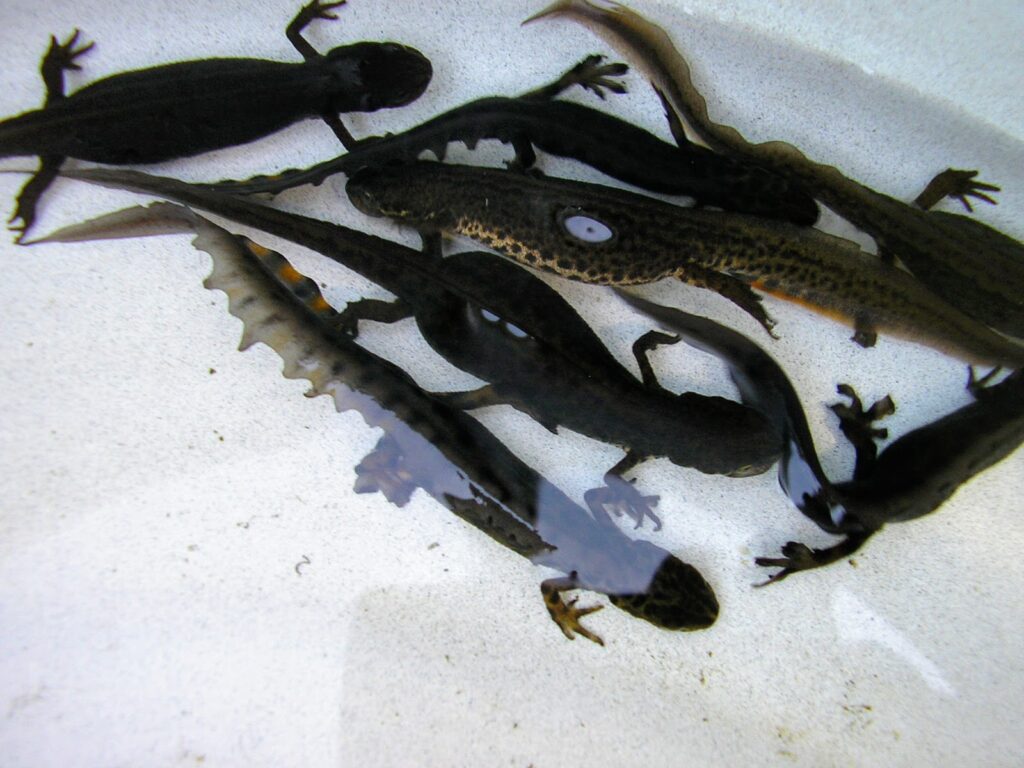
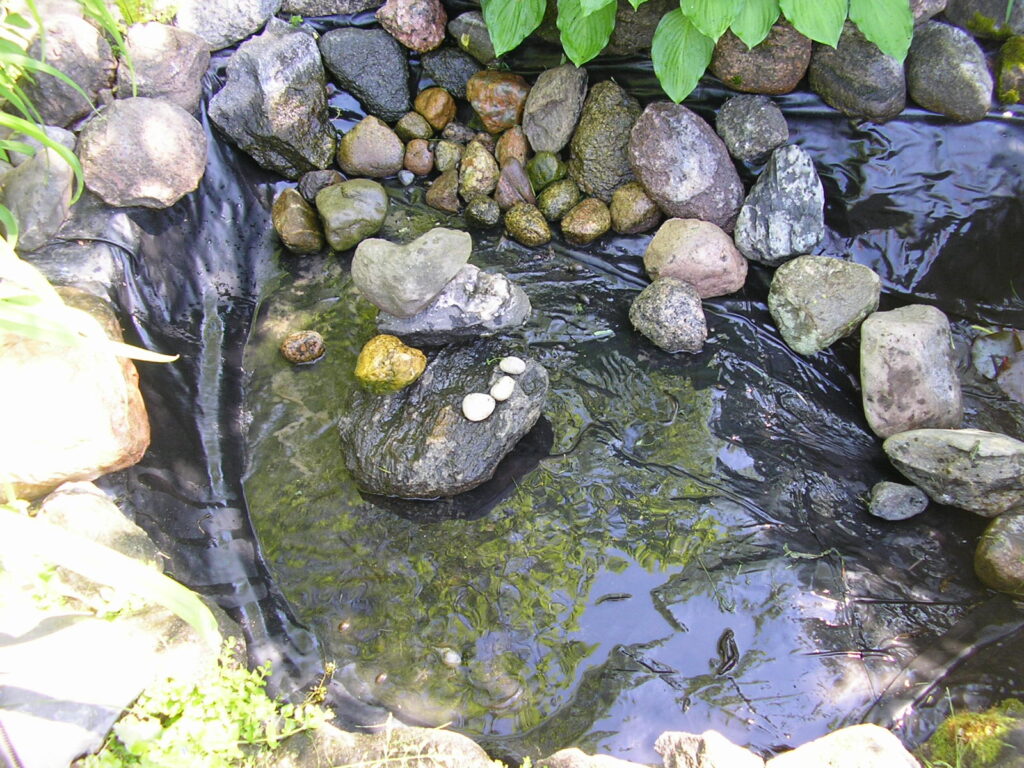
Hiljem saime muidugi teada, et osa vana vett tuleb alles jätta, et tiigile omane kooslus säiliks. Sellest alates meil enam vetikatega probleeme pole ja tiigipuhastustöö tuleb ette võtta umbes kord viie aasta tagant, et põhjamuda vähemaks võtta.
Kõik tiigielanikud peale tigude on mingil kombel ise leidnud tee meie tiiki. Nad paistavad siin end nii hästi tundvat, et jäävad vahel sõna otses mõttes jalgu.
Later, of course, we found out that part of the old water must be kept in order to preserve the community characteristic of the pond. Since then, we have no more problems with algae, and pond cleaning has to be done about once every five years to reduce bottom mud.
All the pond dwellers except the snails have himself somehow found their way to our pond. They seem to feel so comfortable here that sometimes they literally remain at the feet.

Lisaks eelpoolkirjeldatud superlevijatele hakkasid end liiga laiali ajama ka päevaliiliad ja nende iga-aastane piiramine hakkas juba tulutuks muutuma. Samuti olid tänu viimaste aastate kuivadele ja kuumadele suvedele suviti kiiresti koledaks muutunud ka vanad hostad. Kuna nüüdseks on turule tulnud ka palju päikesetolerantseid hostade sorte, kolisime vanad hostad varjulisemasse paika ning asemele istutasime päikesetolerantsed hostad ning hoopis leplikuma kortslehe. Päevaliiliat hakkas asendama thunbergi kukerpuu Harlequin.
In addition to the super-spreaders described above, daylilies also started to spread too much, and their annual limitation was already becoming useless. Also, thanks to the dry and hot summers of the last few years, the old hostas had also quickly turned ugly in the summer. Since many sun-tolerant hosta varieties have now appeared on the market, we moved the old hostas to a more shady spot and replaced them with the sun-tolerant hostas and the more forgiving Lady’s mantle. The daylily began to be replaced by the Thunberg’s barberry Harlequin.
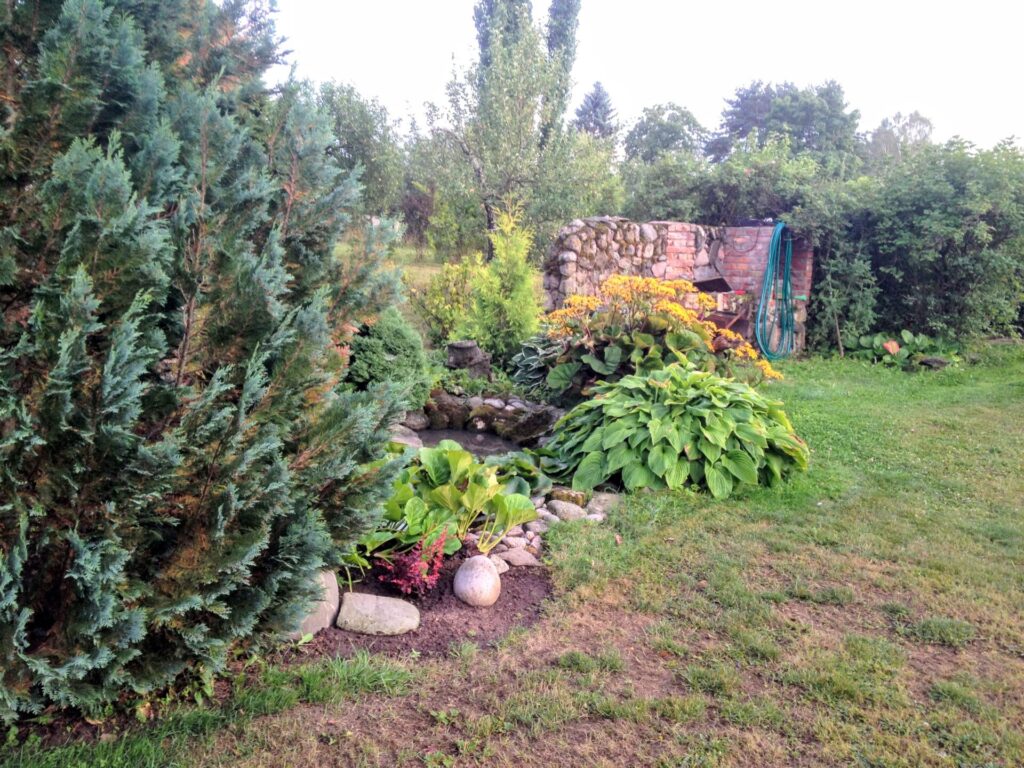
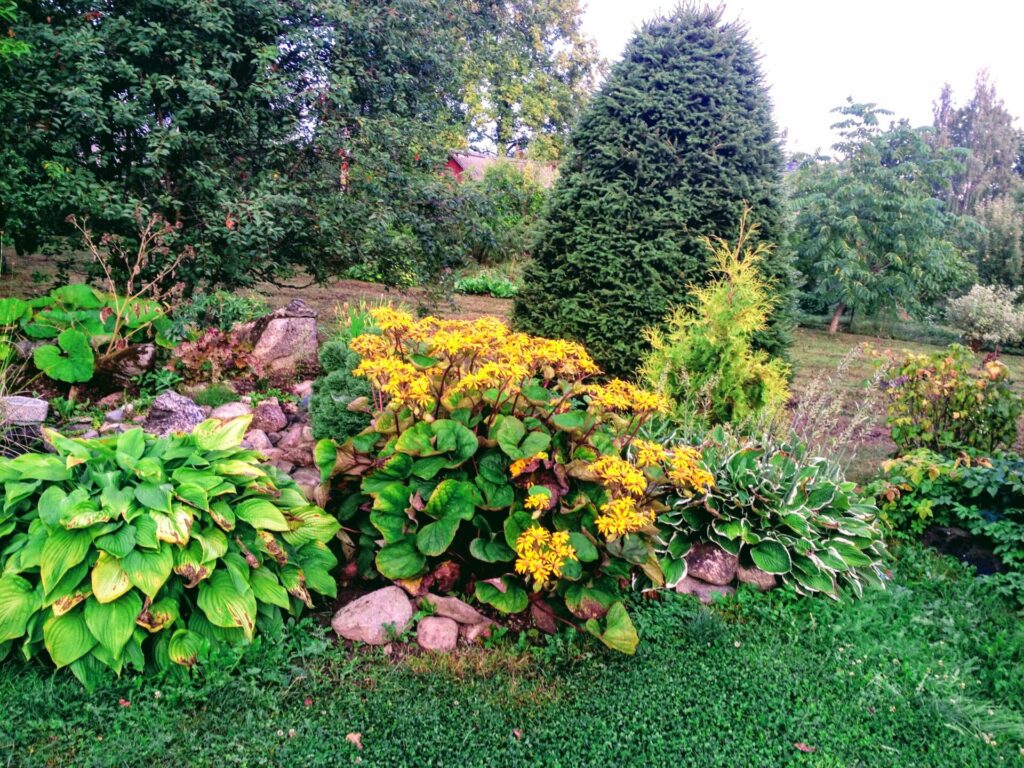
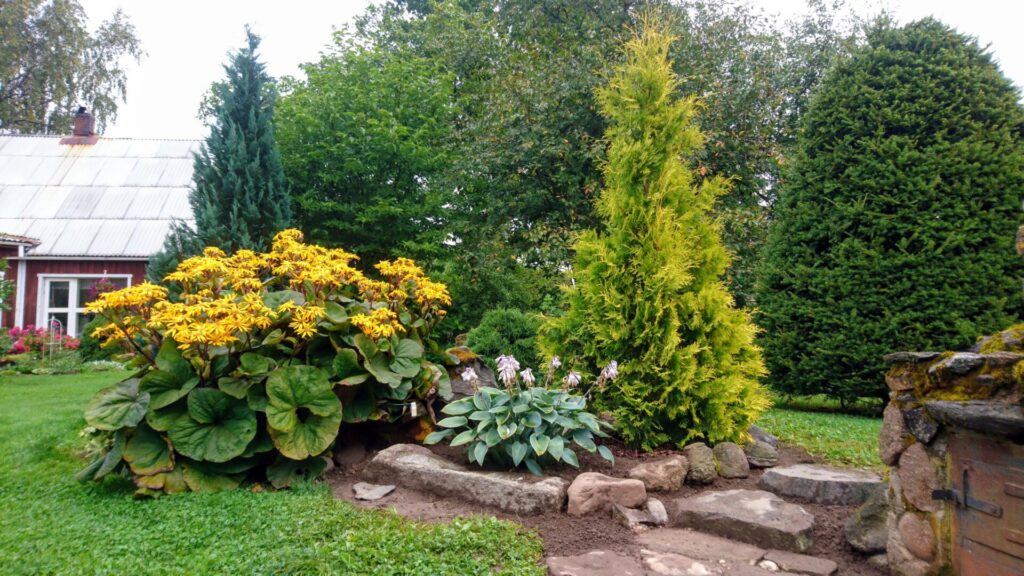
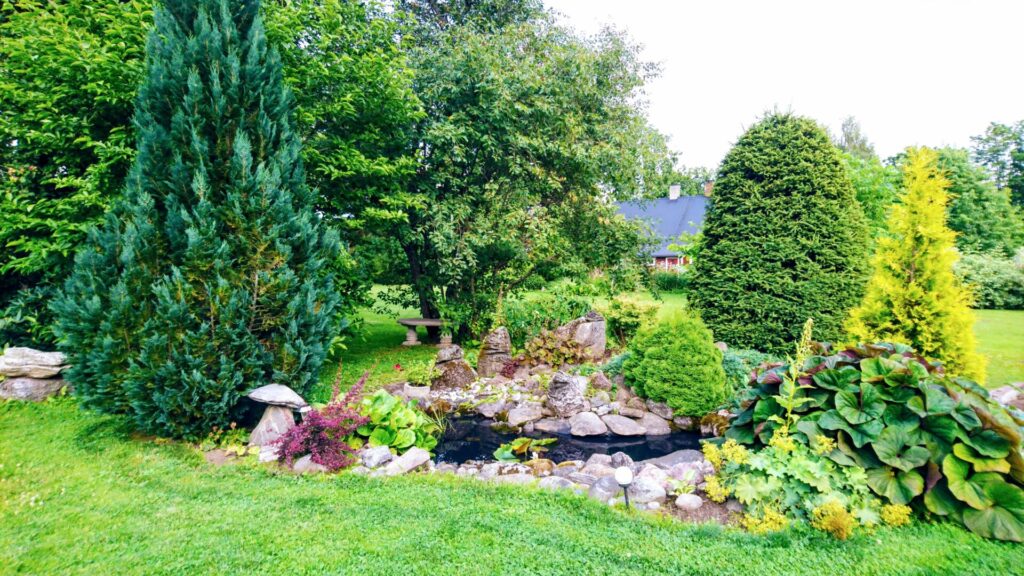
2020 sügisel istutasin tiigi ette ka paar aed-liivateed, et vältida muru kivide vahele sissekasvamist.
In the fall of 2020, I also planted a few thyme in front of the pond to prevent the grass from growing in between the stones.


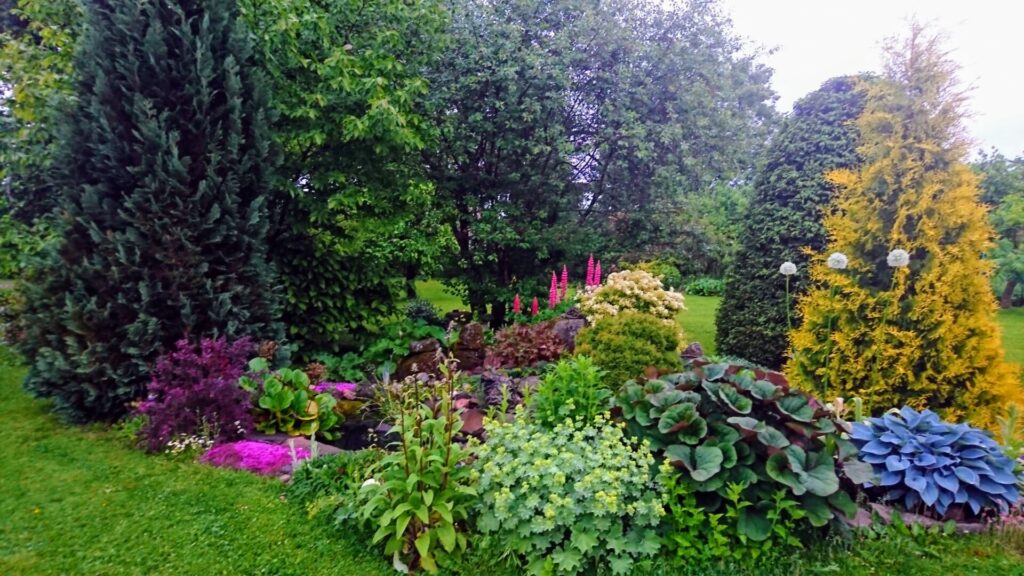
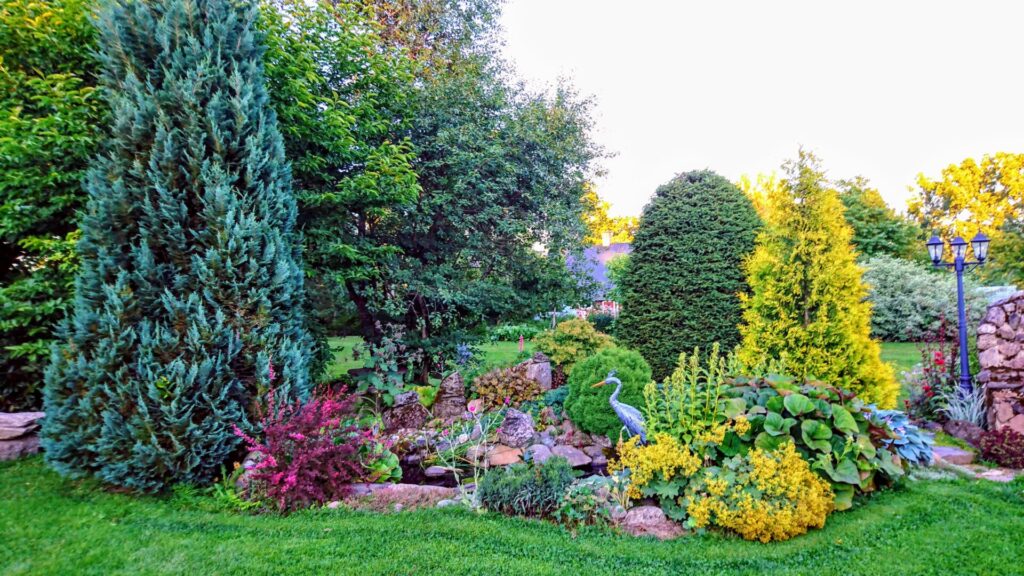
Kui juba eelpool sai räägitud liigsetest vohajatest, siis jäi mainimata tiigisisene vohaja vesiroos, keda on samuti tulnud mõned korrad mööda tuttavaid laiali jagada.
If we already talked about the excessive spreaders, the water lily that spread inside the pond was not mentioned, which has also had to be distributed a few times to acquaintances.
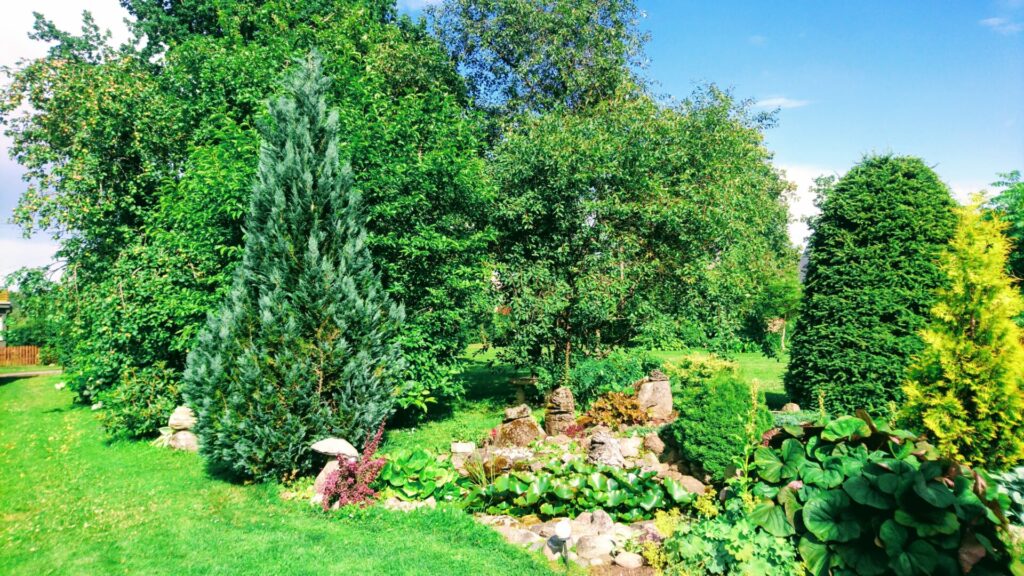
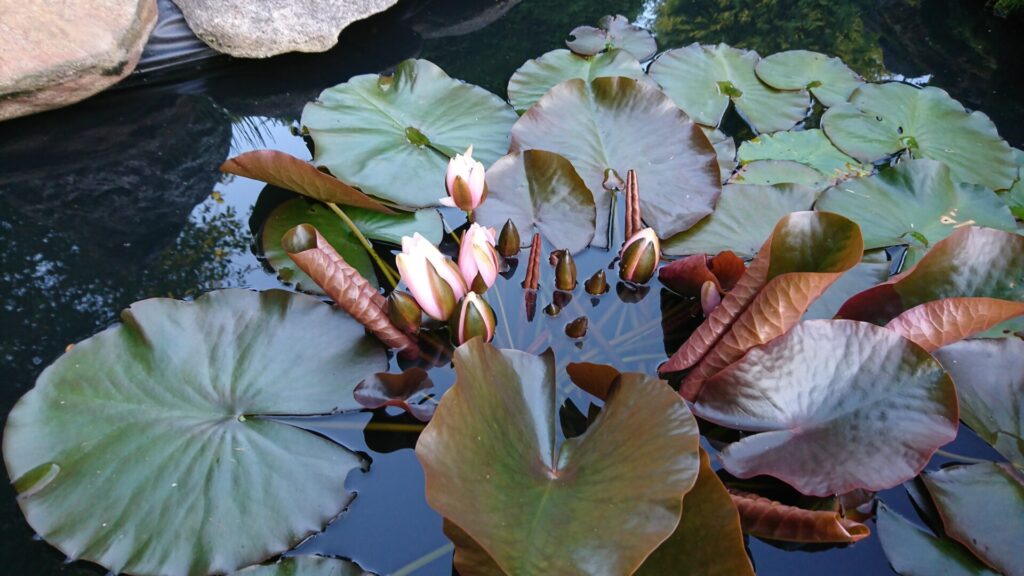
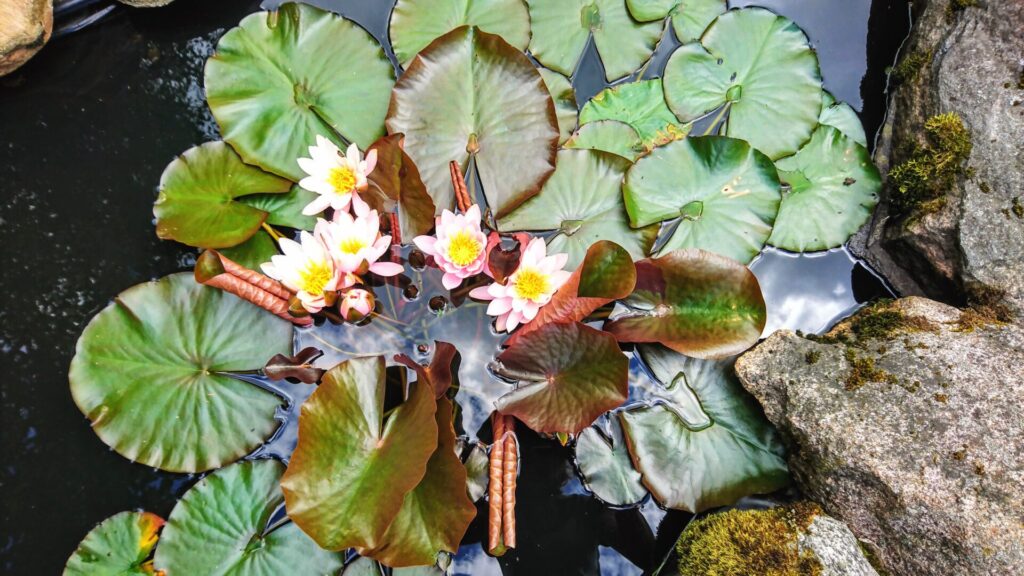
Viimaste aastate kuumadest kuivadest suvedest rääkides selgus, et need on muutunud probleemiks ka tiigi küljel seni väga hästi vastu pidanud punastele ja roosadele lupiinidele. Kuna kivid aitavad hästi niiskust hoida, toetasin nende kasvupaika suurte maakividega.
Speaking of the hot, dry summers of recent years, it turned out that they have also become a problem for the red and pink lupins growing on the side of the pond, which have withstood very well so far. Since stones help to retain moisture well, I supported their growing place with large ground stones.
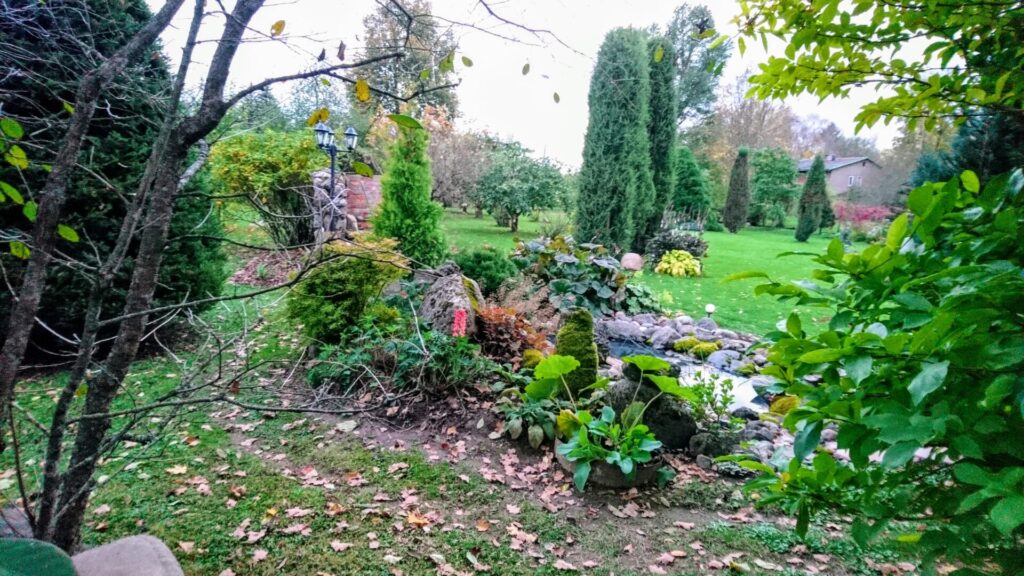
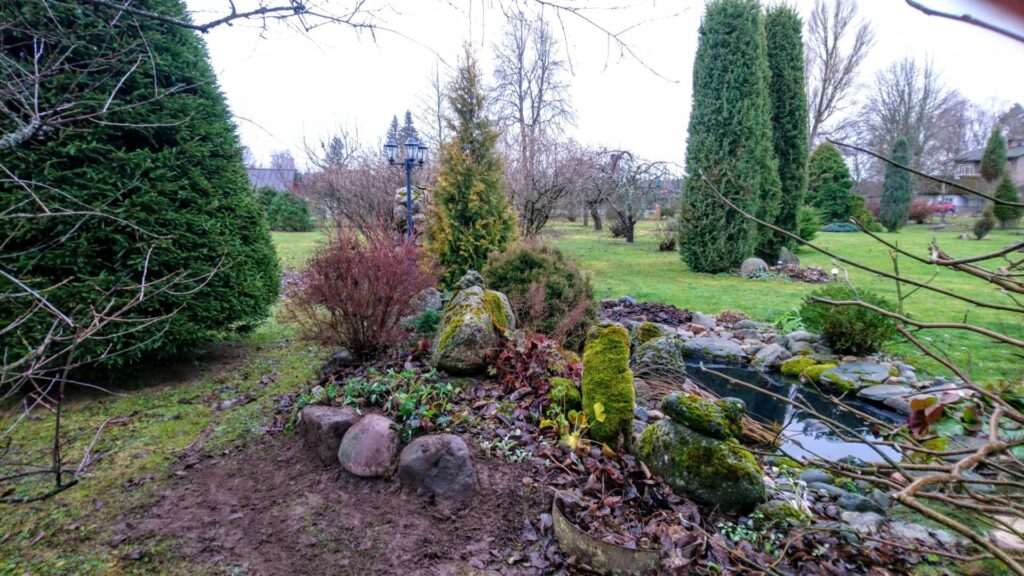
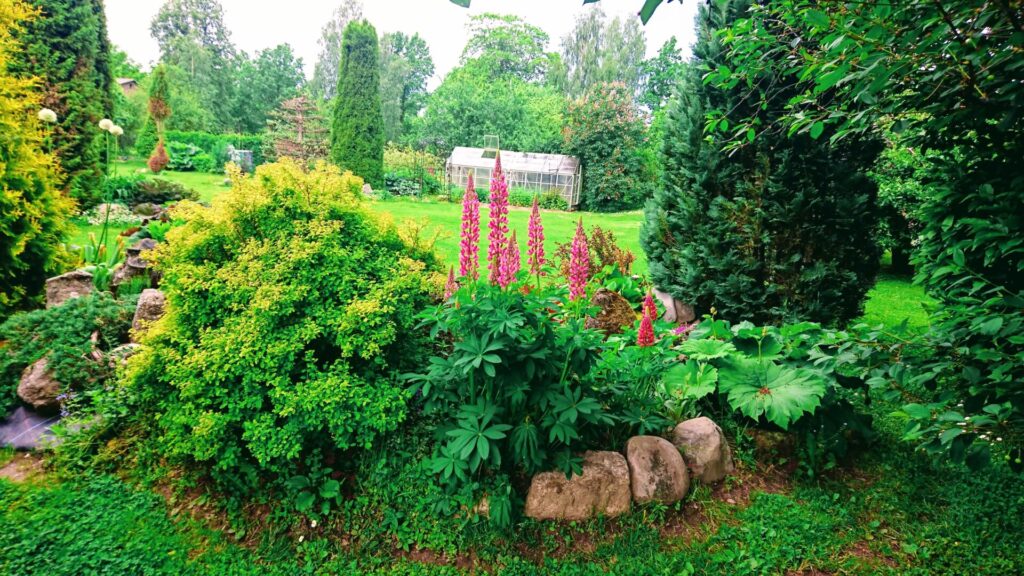
Viimasel pildil on näha ka katkujuurt asendama istutatud laudleht.
In the last picture, you can also see the shield-leaf Rodgersia planted to replace the butterbur.
Tiigi tagumisele küljele istutasin värvi andmiseks ka igasugustele tingimustele hästi vastu pidava lõokannuse.
On the back side of the pond, I also planted a fumewort, which is resistant to all conditions, to give it color.
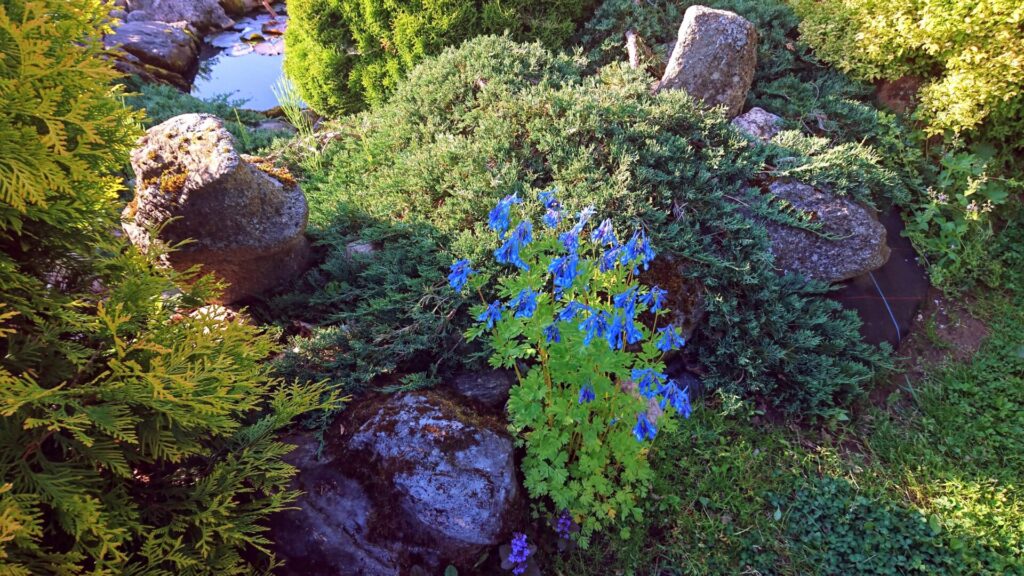
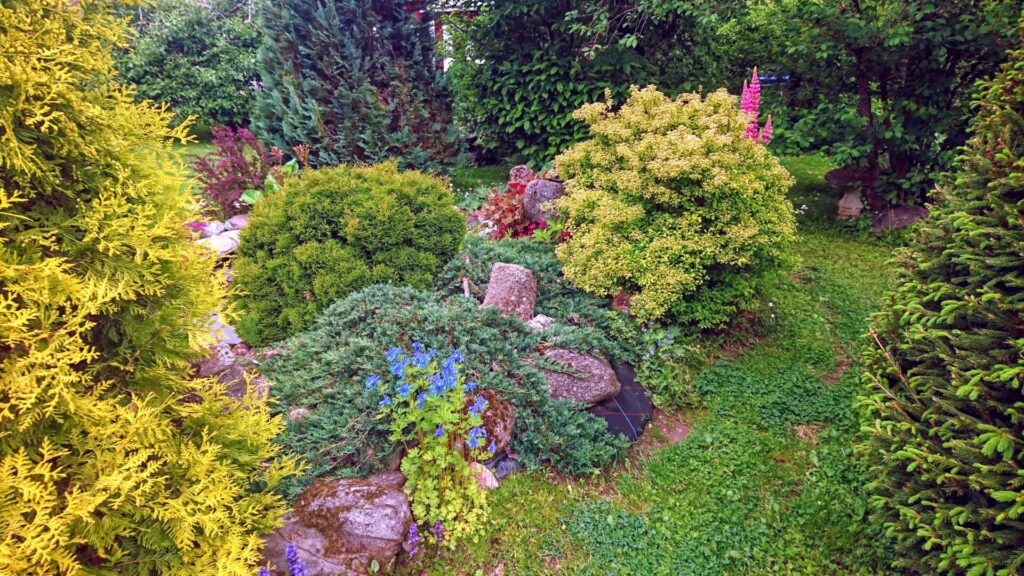
Ja ongi tiigile peaaegu ring peale tehtud. Jäänud on ainult tiigi ja grilli vaheline rada, kuhu muru sissetungi vältimiseks istutasin astekivide vahele roomava akakapsa Chocolate chip, roomava jomplõua ja muidugi aed-liivatee. Värvi andmiseks veel grilli kõrvale kõrge raikaeriku Variegata, thunbergi kukerpuu ja monarda.
And the circle around the pond is almost done. All that remains is the path between the pond and the barbecue, where I planted carpetweed Chocolate Chip between the stepping stones, creeping mazus and, of course, the thyme. To give it color, I also planted a bulbous oat grass Variegata, a Thunberg’s barberry and a monarda next to the barbecue.
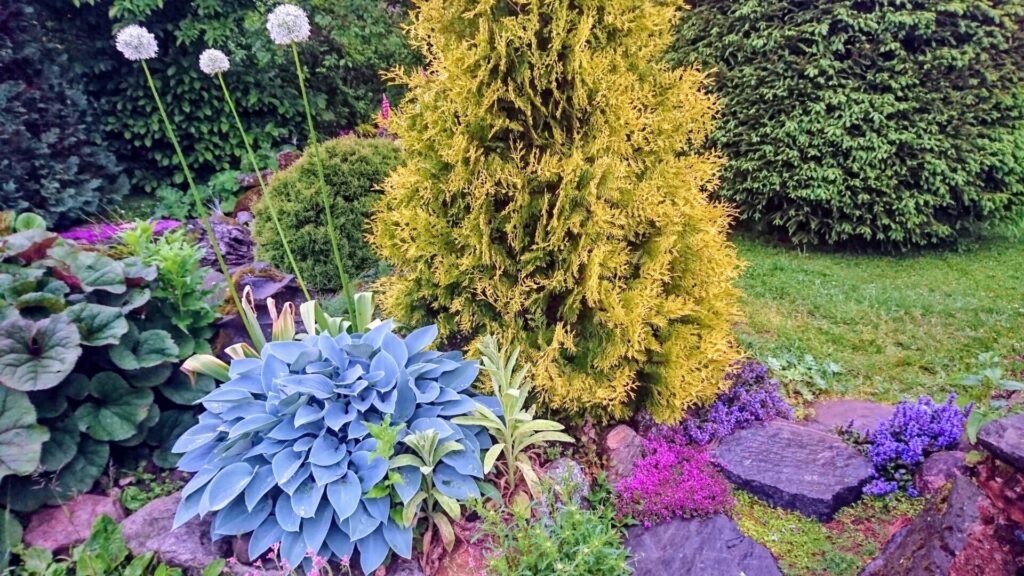
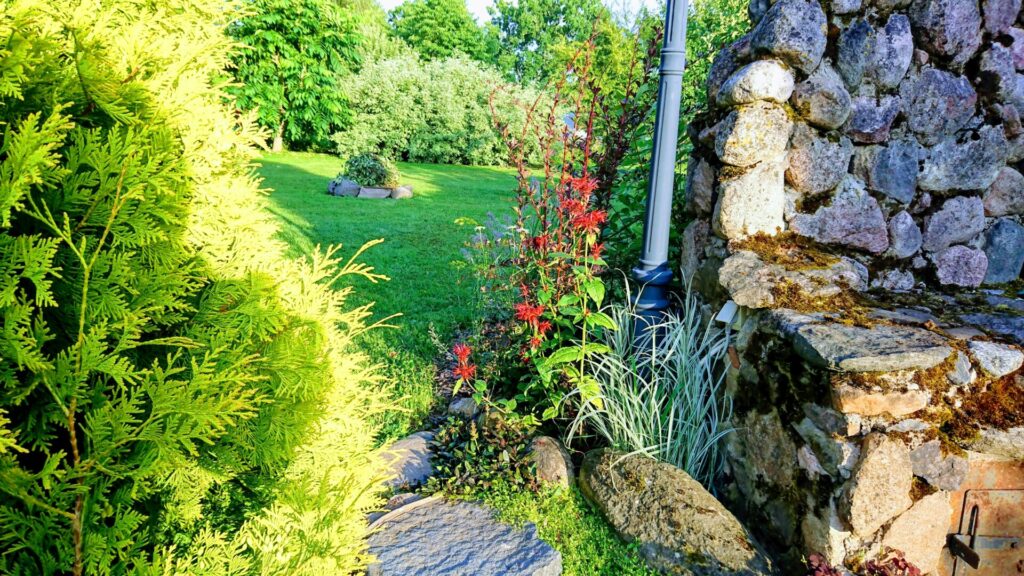
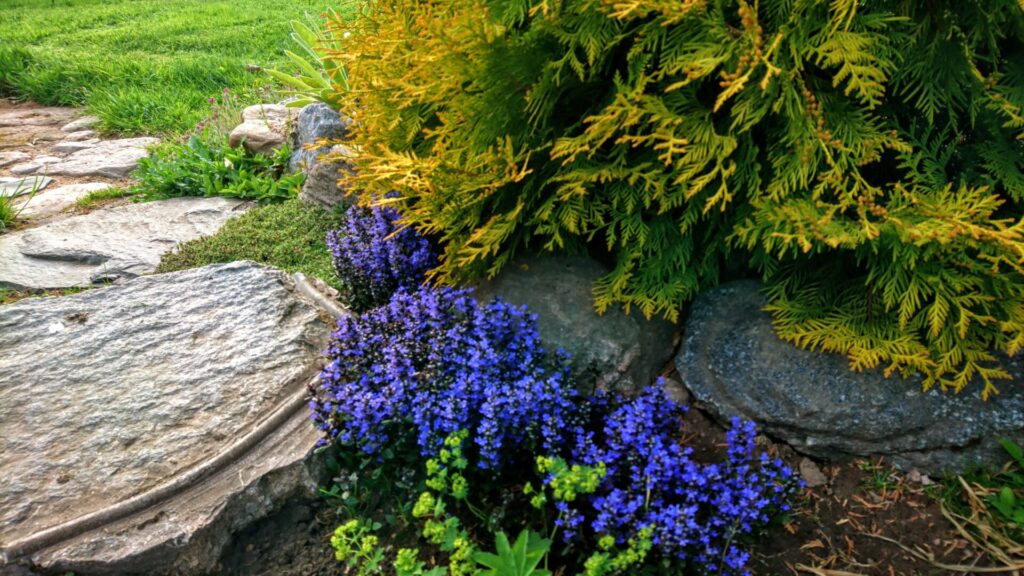
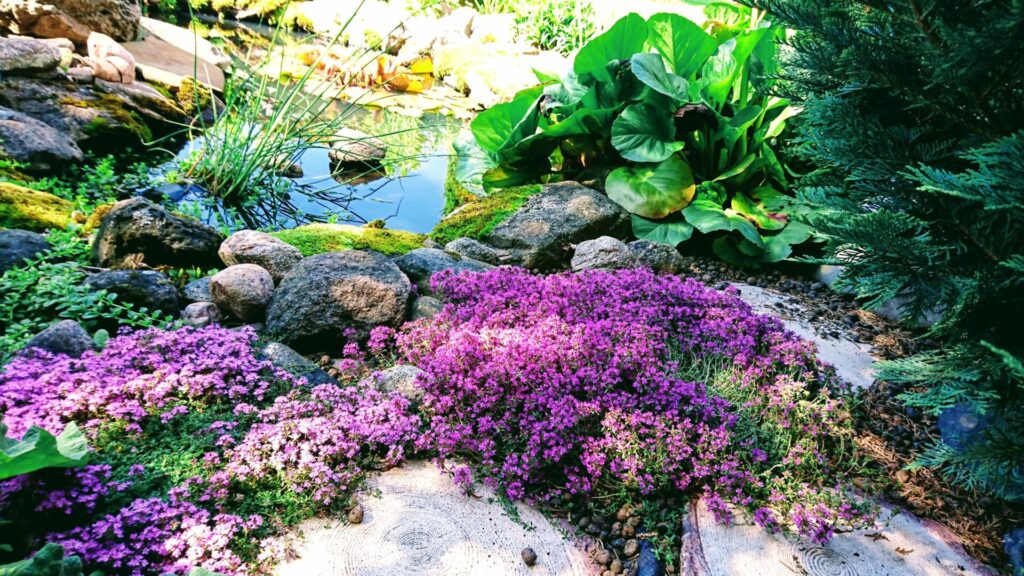
Tiigiümbruse tublidest taimedest on veel nimetamata juba aastaid künka otsas hooldamata vastu pidanud punaste lehtedega helmikpööris ja tiigis kasvav kare kaisel Zebrinus.
Among the good plants around the pond, there are not yet mentioned the red-leaved coral bells, which has endured for years without maintenance on the top of the hill, and the softstem bulrush, Zebrinus, which grows in the pond.
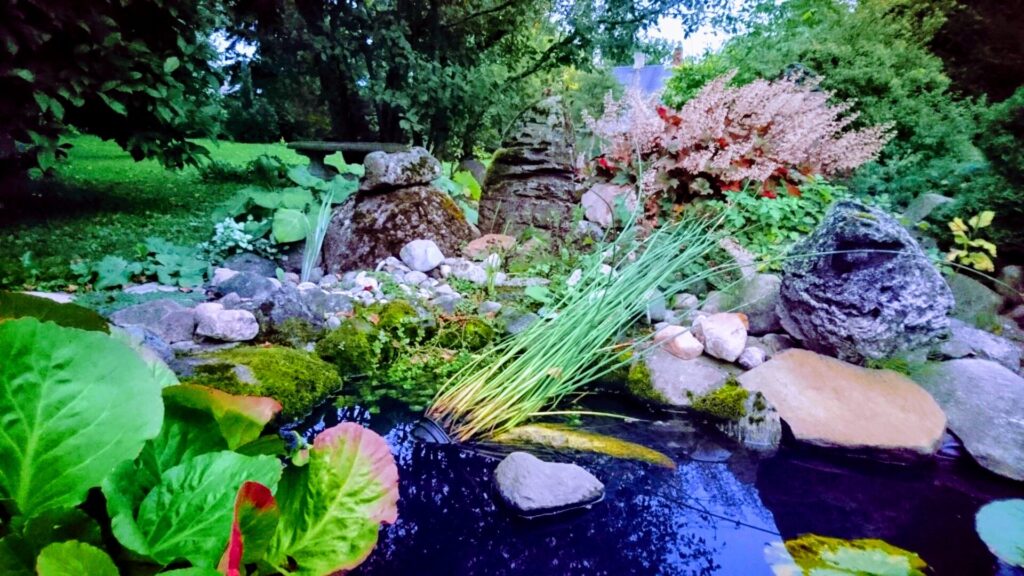
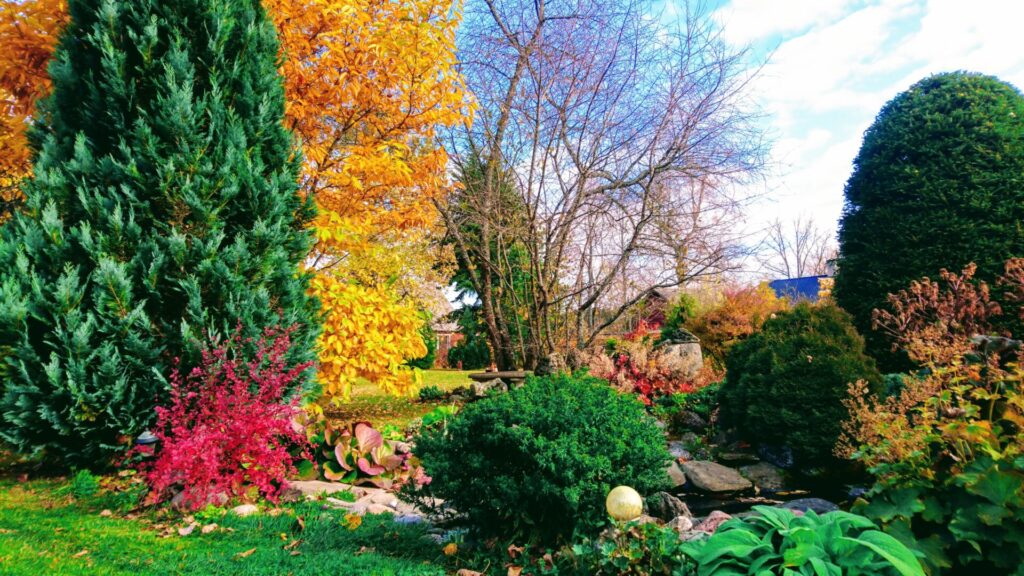
Mainimata oleksid jäänud ka tiigi äärde end ise külvanud valged ja roosad digitaalised.
The white and pink digitalis that sowed themselves by the pond would also have gone unmentioned.

